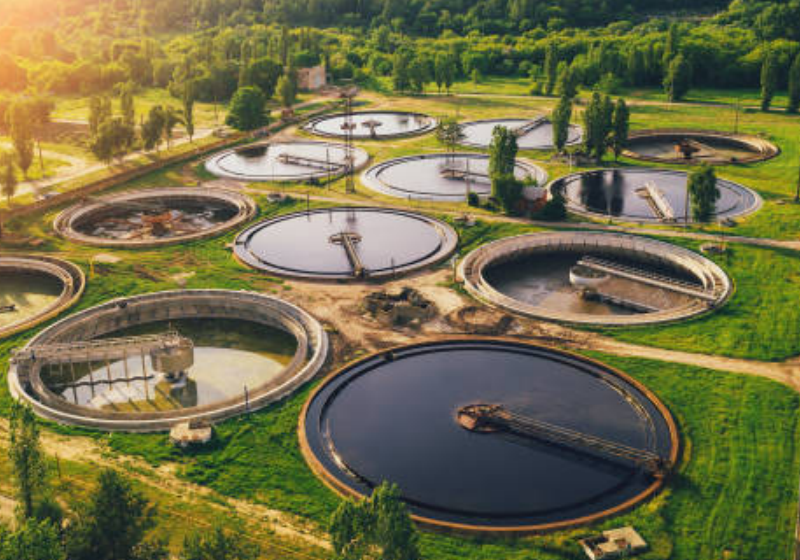Introduction of Anaerobic Process
Anaerobic biological treatment is a process in which the nutrient and environmental conditions required by anaerobic microorganisms are formed under anaerobic conditions, and such microorganisms are used to decompose organic matters in wastewater and produce methane and carbon dioxide.
Four stages of Anaerobic Treatment Process
The anaerobic degradation process of macromolecular organics can be divided into four stages: Hydrolysis Stage, Fermentation (or Acidification) Stage, Acetic Acid Production Stage and Methane Production Stage.
In the Hydrolysis Stage,complex insoluble polymers are converted into simple soluble monomers or dimers.
The Fermentation (or Acidification) Stage is a biodegradation process in which organic compounds are used as both electron acceptors and electron donors. In this process, dissolved organic compounds are converted into end products dominated by volatile fatty acids, so this process is also called acidification.
In the Acetic Acid Production Stage, the products of the previous stage are further transformed into acetic acid, hydrogen, carbonic acid and new cell substances under the action of hydrogen producing acetic acid bacteria.
In the Methane Stage, acetic acid, hydrogen, carbonic acid, formic acid and methanol are converted into methane, carbon dioxide and new cellular substances
Tanks in Anaerobic Treatment Process
The reaction in the Acidification Tank is a section of anaerobic reaction.
Anaerobic Tank refers to the reaction tank without dissolved oxygen and nitrate.
Anoxic Tank refers to the reaction tank without dissolved oxygen but with nitrate.
Acidification Tank
Process: hydrolysis, acidification, acetic acid production, methanation limiting, pH value decreasing.
Purpose: To improve the biodegradability.
Aeration system:The hydrolysis acidification tank can not be equipped with aeration device inside, and the retention time can be controlled before hydrolysis and acidification, so there is no anaerobic gas generation stage. The COD removal rate of the first two stages is not very high, because its purpose is to change macromolecules into small molecules of organic matter, generally the removal rate is about 20%, and the COD removal rate in the gas generation stage is generally about 40%, but this is the hydrogen sulfide gas generated needs to be deodorized, And the residence time to reach the gas production stage is longer than the first two stages, that is, anaerobic state will appear.
Anaerobic Tank
Process: Hydrolysis, acidification, acetic acid production and methanation are carried out simultaneously, and pH needs to be adjusted.
Purpose: To remove COD.
Aeration system:Anaerobic tank is a structure without aeration and with high pollutant concentration. Because dissolved oxygen is consumed by decomposition, there is almost no dissolved oxygen in the water body, which is suitable for anaerobic microbial activities to treat pollutants in the water; Anoxic tank is a structure with insufficient or no aeration but low pollutant content, which is suitable for aerobic and facultative microorganisms.
Anoxic Tank
Process: There is hydrolysis reaction, and its pH value increases in the denitrification process.
Purpose: In the nitrogen removal process, it mainly plays the role of denitrification to remove nitrate nitrogen, while removing part of BOD. It also has the function of hydrolysis to improve the biodegradability.
Aeration system:The anoxic tank shall be equipped with an aeration device to control the dissolved oxygen at 0.3-0.8mg/l. The organic substances in the wastewater shall be degraded by facultative microorganisms and biofilms. The aerators in the contact oxidation tank shall be carefully selected to ensure both the oxygen supply and the biofilm falling off and updating. Generally, microporous aerators are not selected as the aerators at the bottom of the tank. The aerobic tank is a structure that can maintain the dissolved oxygen content in water at about 4mg/l through aeration and other measures, which is suitable for the growth and reproduction of aerobic microorganisms, so as to deal with pollutants in water.
#QDEVU #WATERTREATMENT #WASTEWATERTREATMENT #SEWAGEWATERTREATMENT #BIOLOGICALTREATMENT



